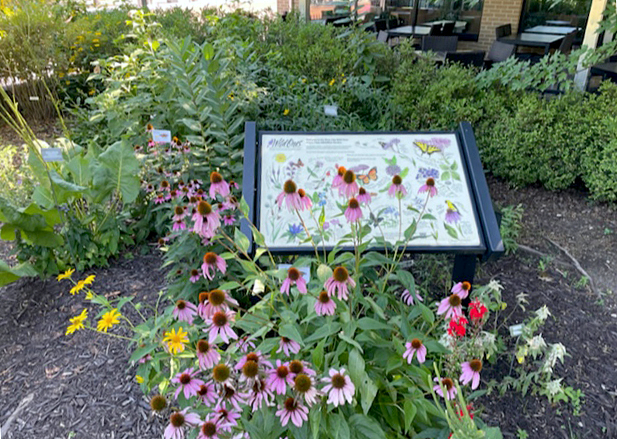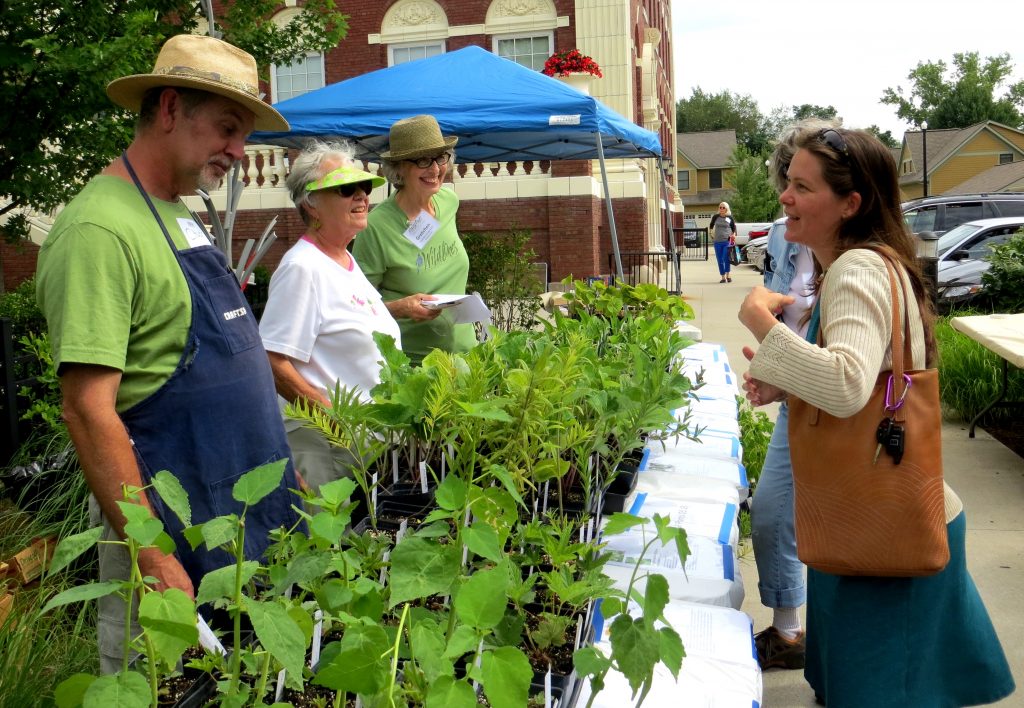History of our Native Plant Education Garden (NPEG)
In 2012, Wild Ones River City Chapter began transforming a portion of an English style garden into a pollinator habitat garden comprised of Michigan native plant species. This thriving garden can be found at 920 Cherry St., Grand Rapids and is the property of Monarch Investment & Management (formally belonging to Inner City Christian Federation). The location is highly visible being situated in front of an historic structure built in the early 1900’s originally known as the D.A. Blodgett Children’s Hospital. The surrounding neighborhood is a vibrant urban area comprised of both business and residential properties. Direct business neighbors include Brewery Vivant, The Green Well Gastro Pub, Maru Sushi and many more. Several pedestrian pathways and benches within the garden encourage frequent visitors.
Initial work involved the removal of some non-native species of shrubs and perennials which were replaced with native species. Each year since then, additional species have been planted by Wild Ones River City volunteers and to date, there are over 85 different native plant species. We applied for and received two grants which allowed us to develop educational signage to help visitors learn about the importance of native species for pollinators.

Volunteer work days are scheduled and guided by the Garden Chairs and are posted on our website on the VOLUNTEER page. Generally, there are 1-2 shifts scheduled per month and a shift lasts about two hours. Duties may include pruning, weeding, seed collection, planting, or labeling plants. These garden sessions are fun, educational and provide a great opportunity to socialize with other people interested in native gardening.
Wild Ones River City Chapter formerly hosted our Native Plant Sales at the NPEG. We occasionally hold an open garden. 2024 Open Garden is June 24—see EVENTS page. Open Gardens help Wild Ones to connect directly with the community to offer information about native plants. and our efforts to care for this special urban space for pollinators; showcasing the fact that native landscaping can be beautiful and functional. Increasing biodiversity in our landscapes brings back native insects that, in turn, support the web of life that we depend on for all aspects of a healthy environment.

